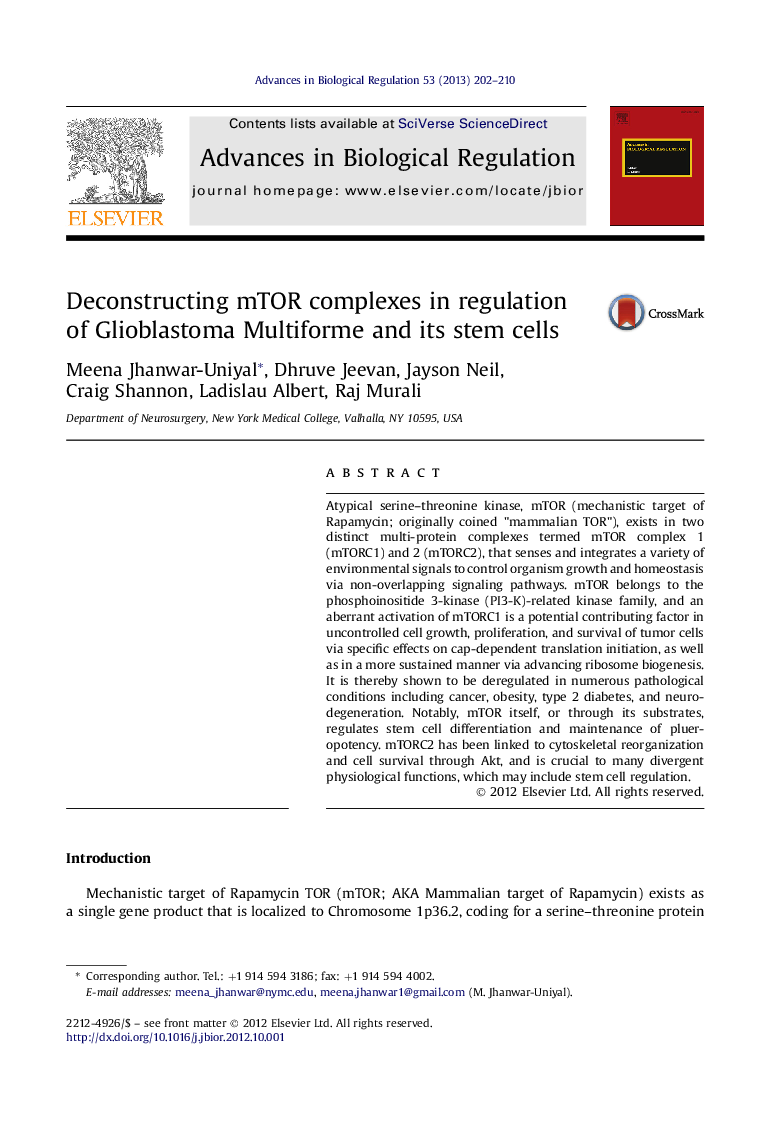| Article ID | Journal | Published Year | Pages | File Type |
|---|---|---|---|---|
| 1924490 | Advances in Biological Regulation | 2013 | 9 Pages |
Atypical serine–threonine kinase, mTOR (mechanistic target of Rapamycin; originally coined "mammalian TOR"), exists in two distinct multi-protein complexes termed mTOR complex 1 (mTORC1) and 2 (mTORC2), that senses and integrates a variety of environmental signals to control organism growth and homeostasis via non-overlapping signaling pathways. mTOR belongs to the phosphoinositide 3-kinase (PI3-K)-related kinase family, and an aberrant activation of mTORC1 is a potential contributing factor in uncontrolled cell growth, proliferation, and survival of tumor cells via specific effects on cap-dependent translation initiation, as well as in a more sustained manner via advancing ribosome biogenesis. It is thereby shown to be deregulated in numerous pathological conditions including cancer, obesity, type 2 diabetes, and neurodegeneration. Notably, mTOR itself, or through its substrates, regulates stem cell differentiation and maintenance of plueropotency. mTORC2 has been linked to cytoskeletal reorganization and cell survival through Akt, and is crucial to many divergent physiological functions, which may include stem cell regulation.
